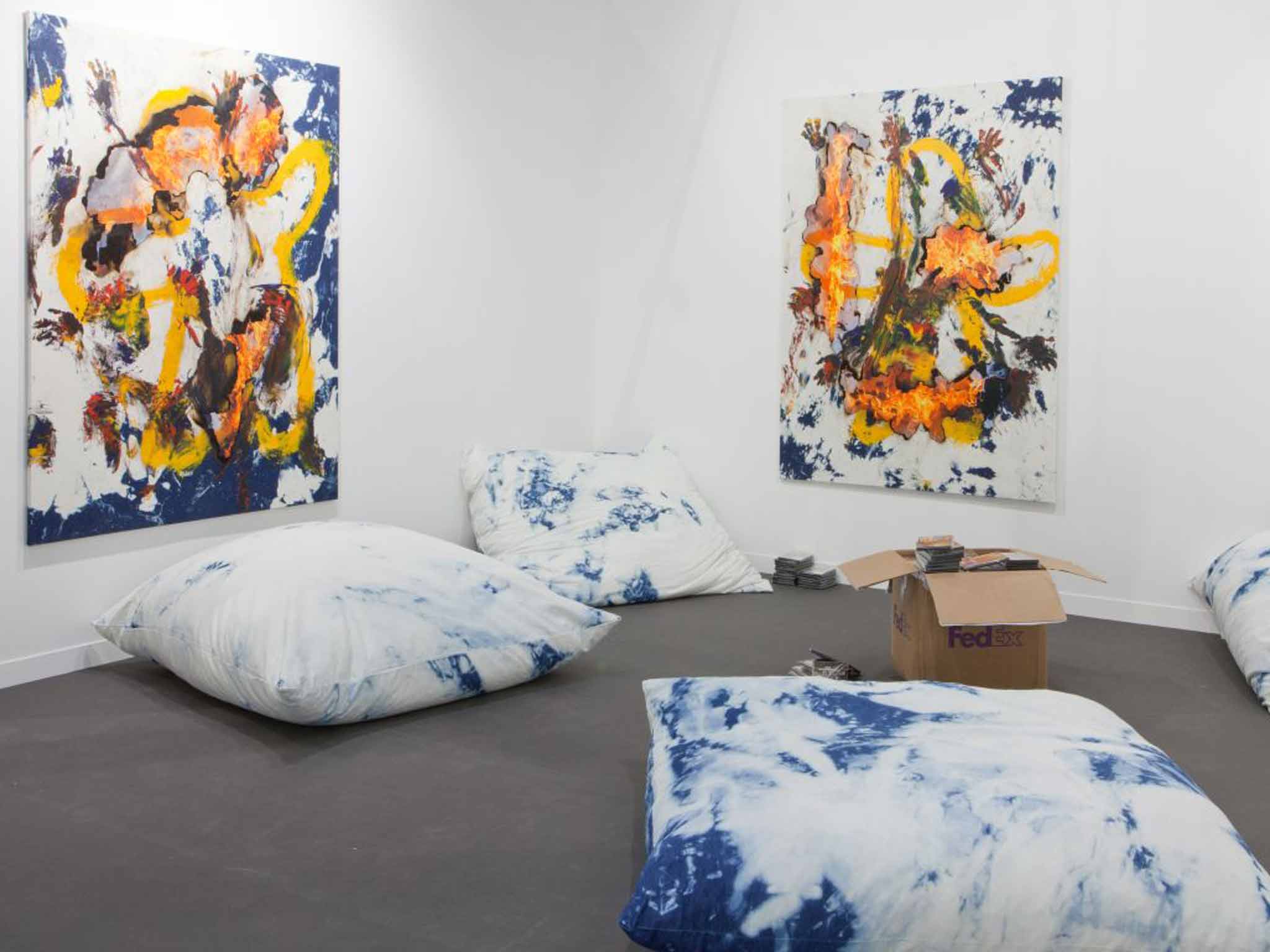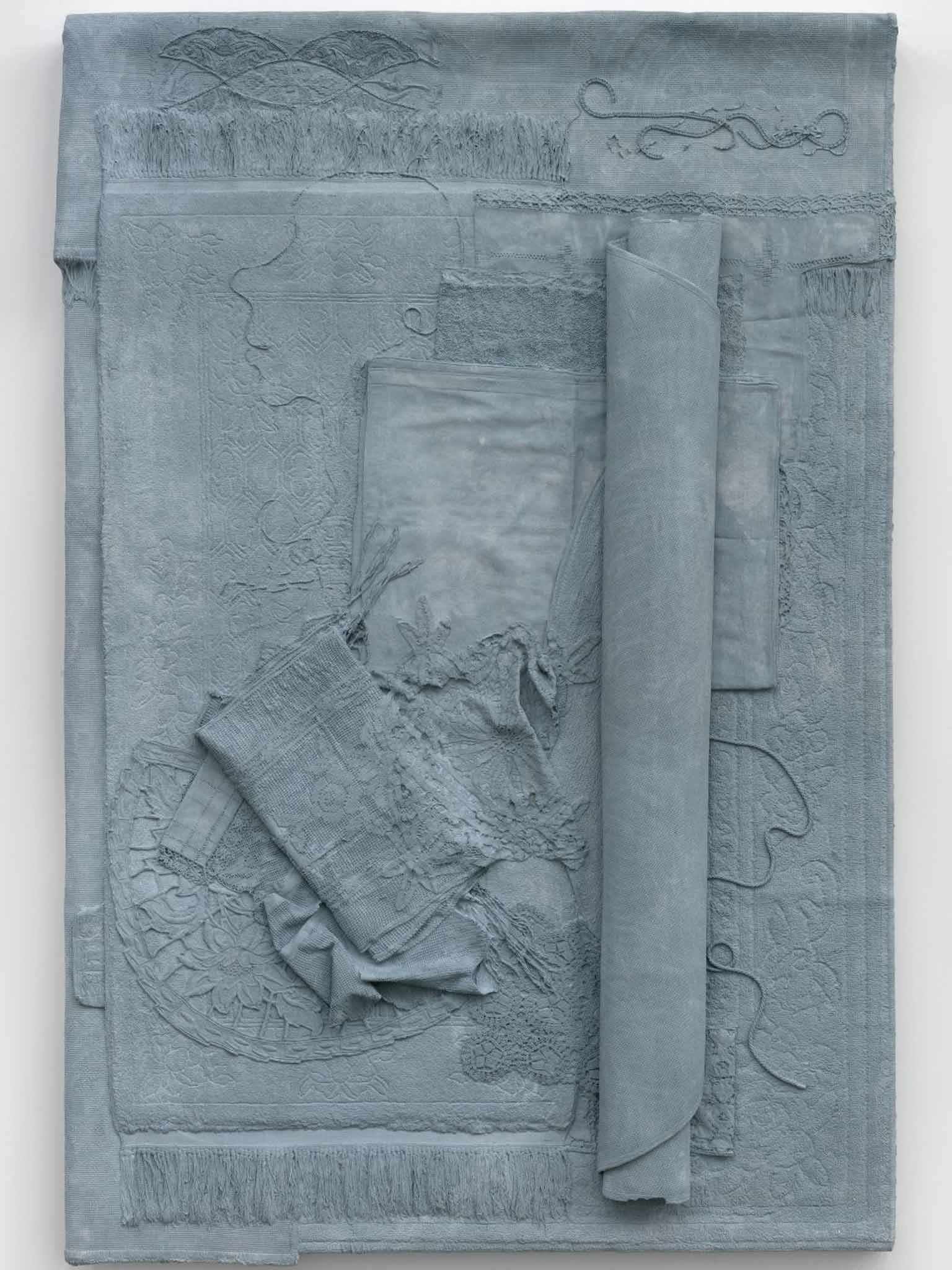Beware Wet Paint: The ICA's latest ambitious exhibition
Are these young bucks teaching the old masters new lessons? Karen Wright investigates

Painting, its demise and its resurrection have been the subject of debate in the contemporary art world for many years. When a show purporting to be about the best new painters worldwide opens tomorrow at the ICA in London, will there be celebrations all round? Will there be new discoveries and relief that the old masters stand the test of time? Well, sadly, no. Beware Wet Paint is an ambitious idea, hampered by the constraints of its location, too small for the striving natures of its participants.
Paint itself is a seemingly strange choice in an avant-garde world that increasingly distances itself from this traditional practice. Gregor Muir, the hipster director, tells us that the title of the show relates to Richard Hamilton's retelling of Marcel Duchamp repeating the phrase with "blood-curdling" emphasis on the word "beware", to highlight the nature of the disruption that can be realised within this often traditional practice. "Beware" and "blood curdling": am I about to be overwhelmed by a new practice, to lift us above the polite sofa paintings of the past? Or perhaps the sofas will themselves be painted; as Muir says, these are artists "for whom painting forms a single strand within a multidisciplinary practice".
The omens seem auspicious, however, as I walk into the ICA, passing by an installation by the French artist Neïl Beloufa which will ultimately embrace projections on to his roughly hewn sculptures. Climbing the two flights to get to the stately Brandon Rooms and entering the beautifully proportioned spaces, I am confronted by the whirling, sick-making, optical work of the American artist Ned Vena, born in 1982. Bridget Riley instantly springs to mind, as do the whirling rotoreliefs of Marcel Duchamp. Respectfully wedged in a niche, it is yet disturbing and inescapable in these rooms.
The American Christopher Wool, born in 1955, is posited here as the granddaddy of the movement, an art school dropout whose work has dazzled me in the past. His co-option of phrases and underground marks, the sheer disrespect for the canvases, surfaces as he grapples with paint. Even the scale of his work can overwhelm the viewer, along with his limited, almost brutal palate of black, white and grey. All of this removes painting from the tasteful, covetable object. I do not know if it was space constraints but in this show Wool's 'Untitled' (2006) is desirable and polite, not showing a struggle but rather a capitulation.
After Wool being so tamed, it is a momentary relief to look at the large and colourful canvas 'The Most Infamous Girl in the History of the Internet' (2010) by the American artist Parker Ito, born 1986, one of the artists that collectors talk about with great enthusiasm. Ito is a self-described YIBA (Young Internet-Based Artist), who uses multilayered images sourced from the internet. He also makes sculpture and video. Written over the surface of a canvas is the text: "Because we are all fighting wars – whether it is 100s of dead people or trying to control your Hershey syrup intake – the more you suffer the more it shows you really care". The breathtaking tastelessness of the words captures my attention briefly. Layered the work is, even if it is solely the number of images, not the meaning, that counts. One scans the flat, perfect surface noting the references to Dali's melting clocks, Murakami's colourful discs, and Richard Prince's nurses posed as three graces in the front. The problem with this work is that what you see is what you get. Once you have ticked off the objects there seems little reason to return to find more.
Andy Warhol's silk screens cast a large shadow over this group, seen in particular in Ito and Nikolas Gambaroff, born in 1979 in Germany but now based in the US. His work here, untitled, a carefully collaged image of comic books scraped away to reveal layers of squashed paint, is more about technique than content. When I read that his work often comes off the wall and is splurged on to domestic furnishings, I feel that sadly here again is a constraint of space; we have a tasteful, wall-based object.
Pamela Rosenkranz, one of the few women included in the show, was born in 1979 in Switzerland, where she still lives. Express Nothing (Natural Brown Smart Water) (2013) is a work made on an emergency blanket (instead of canvas) revealing its mirror qualities with a large, Rorschach-like, central blob. Splat! Wallop! Yawn!
The other woman in the show, the French artist Isabelle Cornaro (born 1974), is a different matter. Homonymes (II) (2012), part of her Homonymes series, is extended painting – a relief, a sculpture disguised as a painting. Cornaro's plaster casts reduce the ordinary into the extraordinary, creating a stasis in the moving.

Nearby is a work entitled Brooklyn Bridge by the German painter David Ostrowski. Ostrowski was born in 1981, and lives and works in Frankfurt. Like many of Ostrowski's paintings, the small gesture in the lower corner of this work is blue, the limited palette seen as "frugal". The definition of what makes a good gestural painting, I was told long ago in my history of art classes, is that the gesture needs to be of a suitable scale to be appropriate for the scale of the canvas. While this is not one of the 13-foot high Ostrowkis, this large, empty white canvas with its tiny marking seems, well, just empty, and strangely polite as well.
So was the climb to the Brandon rooms worth it? Well – yes; there is Cornaro, whom I have discovered, and one other artist whose work lifted my spirits with its energy and pizazz. Korakrit Arunanondchai's Untitled (Body Painting), in two parts with cushions scattered nearby, is made on denim with layers of inkjet printing and gold leaf. Burning his canvas, or denim, Arunanondchai is commenting on the crass commercialisation of our world of international branding. The Thai artist, born in 1986, also makes performances, one of which will happen in an off-site location during Frieze week; if this has the same energy as the painting it will be worth attending. The work and energy reminds me of his contemporary Oscar Murillo, whose early canvases included elements of the actual making, detritus from the studio.
All of the artists in this show come from abroad; there's not a Brit among them. It seems sad to me, as there are many wonderful painters working in London: Lynette Yiadom-Boakye, a worthy 2013 Turner Prize nominee; Celia Paul, whose recent show at Victoria Miro reminded us of what a great painter can do with mere canvas and paint; Anj Smith, who is included in the book 100 Painters of Tomorrow, published to coincide with the exhibition, and whose work stands out from the pages in its strangeness. If these painters do not seem hipster enough for inclusion, using only canvas and paint, what about the often dazzling work of Oscar Murillo? Where are the mirrored paintings of Eddie Peake or Prem Sahib's installations?
I feel Gregor Muir wanted to emulate the groundbreaking show A New Spirit in Painting at the Royal Academy by the then maverick curator Norman Rosenthal, an exhibition that showcased the talents of young artists including Anselm Kiefer and Georg Baselitz, now staples in the artistic cannon.
Gregor Muir has written a preface to the portentously titled 100 Painters of Tomorrow, published by Thames and Hudson, in which he sets out his argument of the importance of Christopher Wool. Strangely, none of the exhibition artists, including Wool, appears in the book, apparently not having made the cut. When I leaf through its handsome, if strangely retro-designed pages, I note that the majority of the painters would make great T-shirts, not surprising as the choice was made solely from JPEGs sent electronically. Where are the juicy, fruity painters of yore? It's sad, because this is a moment where painting has never been so diverse and exciting.
Beware Wet Paint, ICA, London SW1 (020 7930 3647) 24 September to 16 November; '100 Painters of Tomorrow' by Kurt Beers is published by Thames and Hudson, £35
Join our commenting forum
Join thought-provoking conversations, follow other Independent readers and see their replies
Comments
Bookmark popover
Removed from bookmarks